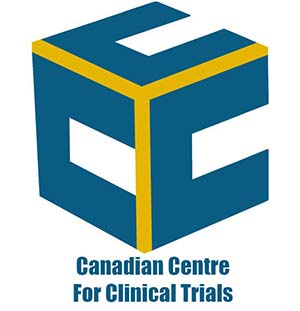Fibromyalgia is a condition associated with widespread pain and tenderness throughout the body. With no identifiable cause and no accepted treatment plan, this often misunderstood and misdiagnosed condition has been causing confusion not only for the medical community but for the individuals who have to deal with the realities of this condition on a daily basis.
Fibromyalgia is considered to be a syndrome which is a collection of related symptoms including chronic widespread muscular pain, fatigue, sleep disturbances, and stiffness along with cognitive and memory problems. However, unlike most medical conditions, these symptoms occur without an identifiable cause.
In recent years, a tremendous amount of research has been conducted in attempts to tease out the causes of fibromyalgia symptoms. Fibromyalgia was originally thought to be a rheumatologic condition (i.e. involving the joints) as it is characterized by musculoskeletal pain. However it is now believed that fibromyalgia is neurological in nature (i.e. involving the brain). Research suggests that the ‘pain networks’ in the brains of patients with fibromyalgia are more easily activated compared to those without the condition, and that impairments are found in the specific brain region responsible for decreasing the intensity of a pain signal.
What is the connection to depression?
Given the long term and enduring pain and fatigue characteristics of fibromyalgia, individuals suffering from this debilitating condition are at a tremendous risk for developing depression. It has been reported that 30 to 90% of those individuals battling fibromyalgia will experience depression at some point in their lives. Although some studies have shown that depression does not increase the severity of fibromyalgia symptoms, depression can severely affect the behaviours of those individuals with fibromyalgia, affecting the course of the illness. Other studies have demonstrated improvements in fibromyalgia symptoms with the treatment of depression and vice versa.
How is Fibromyalgia Treated?
Just as a diagnosis of fibromyalgia can be complex, so can the treatment process for patients. There is no cure for fibromyalgia. Instead, treatment options focus on improving the related symptoms, decreasing pain and improving overall quality of life. The current commonly utilized treatment options for fibromyalgia include gabapentin, pregabalin and duloxetine; and tricyclic antidepressants (TCAs), such as amitriptyline, nortriptyline, and desipramine. Your physician may also prescribe desvenlafaxine for the treatment of depression. Since the relief experienced by patients taking these drugs can vary tremendously it is encouraged that all patients explore the use of alternative therapies to help manage their symptoms.
Computer-based positive psychological intervention
A recent study tested the effects of a positive psychological intervention delivered remotely on psychological functioning and pain in fibromyalgia. Interventions that target positive aspects of mental health, such as positive emotion and self-efficacy, have been shown to facilitate coping and enhance self-management among individuals with chronic illnesses. A single positive psychological intervention may have multiple components taken from various interventions, but studies are often not designed to determine which components work best.
Interventions delivered remotely via information and communication technologies hold promise and have the advantage of being widely accessible, but further research is needed to investigate their use among chronic pain patients.
A group of researchers in Spain tested a one-month positive psychological computer-based intervention for chronic pain in fibromyalgia patients. The intervention, referred to as the Best Possible Self intervention (BPS), used goal setting and guided imagery to help patients project positive future expectations in the form of best possible selves.
Fifteen participants in the BPS group and thirteen in the control completed the intervention. After one session, both groups reported some decreases in negative future expectations and increases in positive affect, but the only significant change occurred in positive affect and it was significant only for patients in the BPS group.
Following completion of the active intervention, the results showed that depression decreased in the BPS group and positive affect and self-efficacy increased compared to control group patients. Pain-related measures and future expectations showed no differences between the groups following completion of the intervention or after completion of the first session.
At the three-month follow-up assessment, patients in the BPS group showed greater decreases in negative affect compared to control patients. Additionally, BPS patients reported significantly higher levels of optimism compared to control group participants. There were no differences between the groups on any of the other measures at the three-month follow-up.
The control group participants realized some positive changes, although group comparisons were not significant. These changes may have resulted in positive expectations conveyed by the researchers to all participants that the intervention could improve mood. Likewise, charting and reflecting on daily activities has been used as a behavioral activation treatment to reduce depression.
This study demonstrated that a computer-based technology can be effective in promoting positive mental health changes in those suffering from conditions like fibromyalgia. Additionally, this study increases our knowledge about the role of positive mental health in the experience of chronic pain conditions. The Best Possible Self intervention proved to be a valuable tool that can be incorporated into pain management protocols for those living with chronic pain.
Other things that might be helpful
As we have all heard before, being active is good for the mind, body and soul and this remains true for individuals diagnosed with fibromyalgia. Although intense exercise can cause symptoms to flare up, engaging in low intensity activity with frequent rest breaks has been demonstrated to help improve pain. Activities such as water aerobics, Tai Chi, and yoga can all be options to facilitate symptom relief. Despite the type of activity you choose, what is most important is that you choose an activity that fits your lifestyle. Remember to start slow and maintain a good pace!
In addition to being active, patients with fibromyalgia are also encouraged to have a healthy diet. Although it is unclear whether specific foods affect fibromyalgia positively or negatively, good nutrition can promote health and healing within the body. Therefore eating a balanced diet can play an important role in the management of this condition.
Did you know?
Individuals with fibromyalgia often have sleep disturbances. Exercise has shown to improve not only self-confidence and mood, but may also work to regulate sleeping patterns in some people.
Musicotherapy, or music therapy can help individuals deal with fibromyalgia and other health conditions. Research shows that music makes you feel better and helps you cope and stay positive. So try listening to your favourite records to help you get through difficult times.
References:
Gracely, RH, Ceko M, Bushnell MC. Fibromyalgia and Depression. Pain ResTreat. 2012. Article ID: 486590. doi:10.1155/2012/486590
Molinari G, Garcia-Palacios A, Enrique A, et al. The power of visualization: back to the future for pain management in fibromyalgia syndrome. 2017. Pain Medicine. https://doi.org/10.1093/pm/pnx298




I find that music helps but getting into a good book or movie takes my mind off the pain as well.
Distraction certainly is a useful approach as with other forms of pain. Following treatment protocols for depression or chronic pain can be very helpful – you might consider hypnosis therapy or traditional therapy to either manage or learn to live with symptoms. To date – there is more evidence based research on the use of hypnosis for pain than any other treatment or medication.